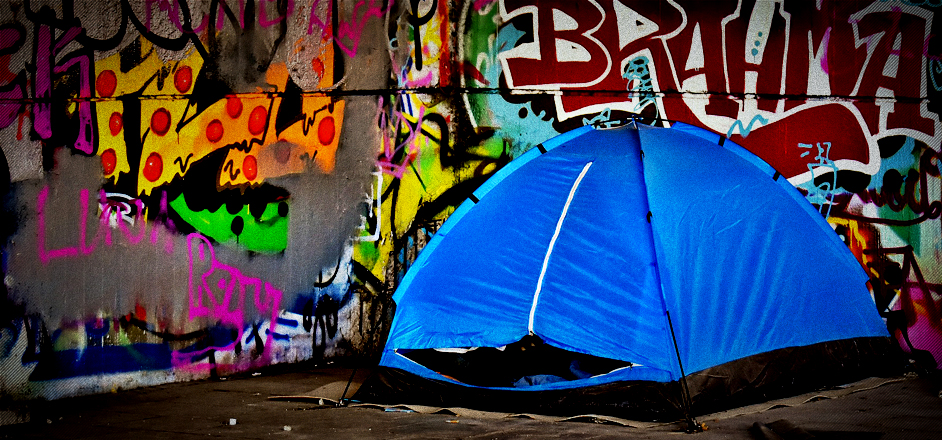Daniel is a 29-year-old homeless crack addict who spends his days roaming the streets of Denver’s Five Points neighborhood, hustling his way from score to score. Lisa* is also in her twenties, 27 to be exact. She has kids, a beautiful house in the suburbs, and a husband who doesn’t know she was an IV heroin user until recently.
On the surface, there’s nothing that connects these two other than their young age. Deep below, however, their penchant for getting high and constant search of the next hit binds them together as peers in a growing epidemic with little regard to social lines.
As a long-time resident to the streets , Daniel and his presence fuel the destitute and drug addicted stereotype familiar to society. His shameless tactics of offering to wash windshields at intersections and pushing around a recently abandoned grocery cart full of cans and personal belongings dignifies the reckless drug culture that is the social standard of the addicts’ world.
“Every day is basically the same,” says Daniel. “No day is ever different. I just get up and get on the hunt. The hunt is over for maybe a few minutes when I get high again. After that, back to hunting.”

It’s the same for Lisa, too, struggling in a new world of addiction increasingly showing the bridge between two contradicting societies is tighter than once thought. She’s a high-functioning addict, proud of her revolving titles: mother, college graduate, corporate employee … successful millennial. The one she hates most though, is being a heroin abuser.
Her high-functioning façade brings to light the complex and destructive world that is substance abuse.
“I live a double-life,” says Lisa. “So far, I’ve been able to balance everything. But I know it won’t last forever and I imagine it will be a nightmare when it all comes crashing down on me.”
In 2014, the National Alliance to End Homelessness reports there are 578,000 homeless individuals roaming the streets of the U.S., and of those, 50 percent report substance abuse issues. Lesser known facts about addiction include one statistic from 2015’s National Council of Alcoholism and Drug Dependence (NCADD) report, one that says 70 percent of the 14.8 million Americans who use drugs are employed, dwarfing the “homeless addict” stereotype highlighted for so long in American media.
Most recently, reports show the growth in addicts continues. In 2016, the National Survey on Drug Use and Health (NSDUH) reported 20.1 million Americans — homeless and not — suffer though substance abuse issues.
Daniel explains that his drug of choice is crack. He’s been using for seven years, and illustrates the drug scene he is accustomed to while living on the streets of Denver is one of opportunity. Not opportunity of betterment, rather the supply of his addiction meets the demand.
“I always have my main connect,” he says. “If he ain’t got what I need, then I know a few other people. The hard part isn’t finding the drugs; it’s finding the cash. Once you spend some time on these streets though, you figure it out.”
Much like many other cities from around the nation, the Five Points neighborhood near downtown Denver has quickly evolved from its urban roots of “the Harlem of the West” into a gentrifying area where crack and cocaine are still prevalent. According to The Denver Post 2018 Crime Report, the Five Points neighborhood has reported 1,324 drug and alcohol crimes this year already — averaging 410.7 reports per month and 13.5 reports per day (as of press time).
While living her double life, Lisa is shrouded in the safety of suburbia. It’s what has kept her four-year heroin addiction a secret from family and friends. Her and Daniel’s addictions are similar, but they’re also very much different. He’s visible on the streets, having to buy in high-crime neighborhoods. She received most of her drugs initially from doctors with legitimate prescriptions — until she had to find harder drugs because the prescriptions ran out. Now, Lisa hunts in Daniel’s neighborhood, both circling the throes of a controlling lifestyle.
“It started out similar to many other heroin addicts — prescription pain pills,” Lisa says. “In 2013, I had a hysterectomy at a very young age and I was prescribed Percocet for the pain. My doctor told me I would experience pain temporarily. The physical pain subsided but the emotional pain was relentless. By the end of my pill bottle, I should have been ready to move on. But I wasn’t. And I didn’t.”
The line between two worlds quickly faded for her, leaving few options to get high.

“Heroin used to be my knight in shining armor,” she continues. “I would drive an hour to meet my dealer in sketchy parts of town, with my kids in the back seat hoping they wouldn’t remember.
“They didn’t forget, though … my kids,” says Lisa. “Maybe their remembering is what will push me to forget and leave all that shit in the past. I’d be lying if I said it doesn’t still have its claws in me. Heroin is a bitch.”





Leave a Reply
You must be logged in to post a comment.